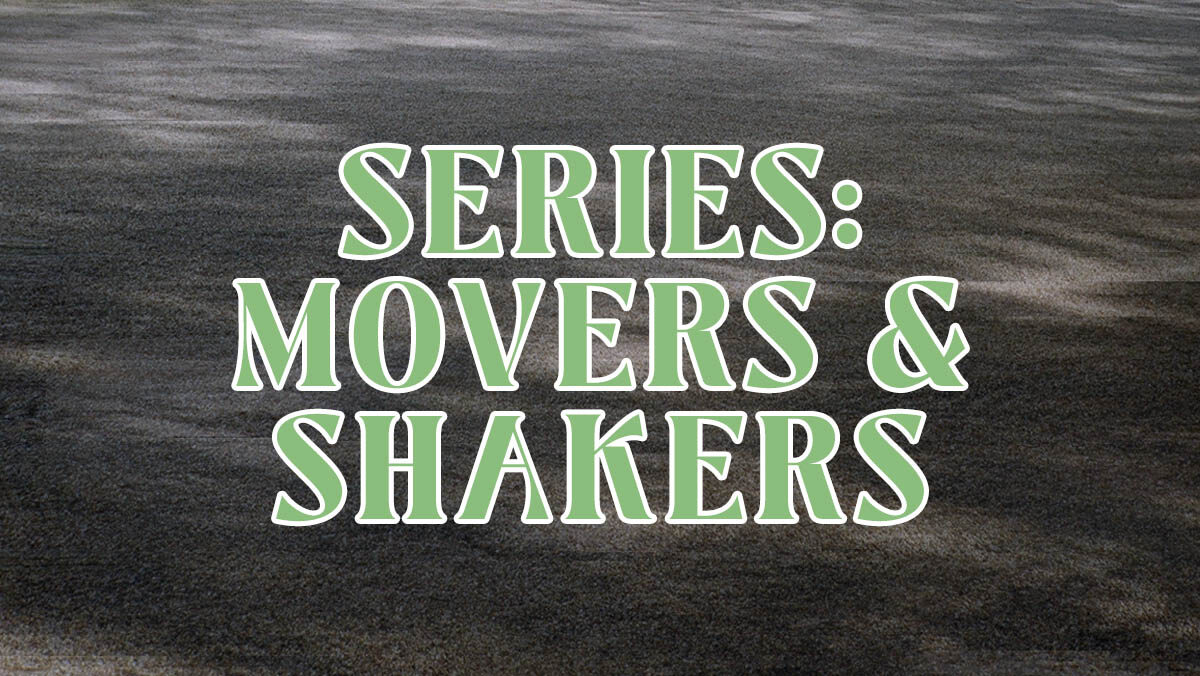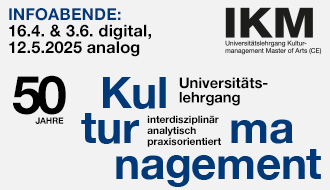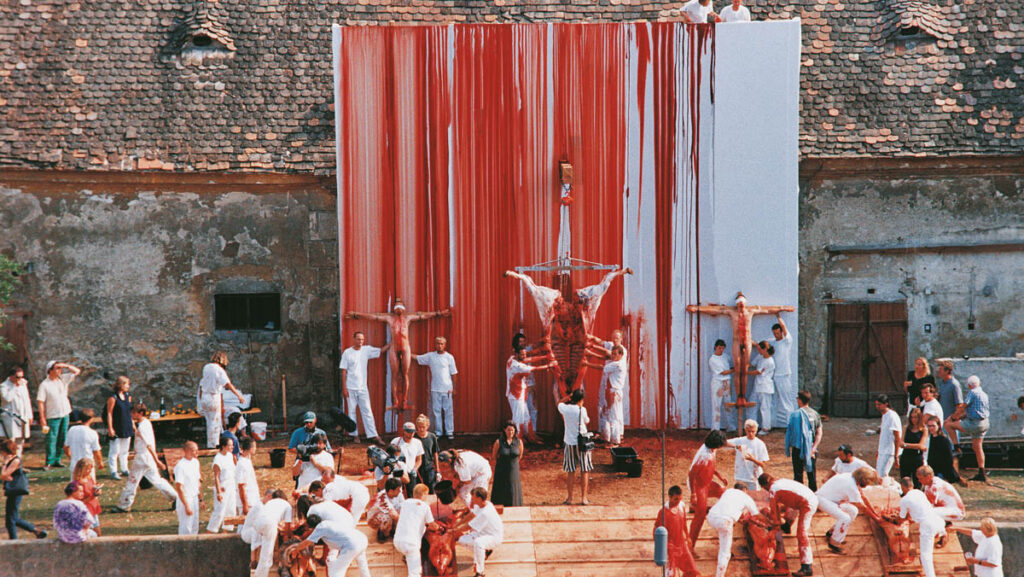
Season 2, Episode 3: A Conversation with Laura Malacart.
When did you start The Balcony Project Space?
It opened in June last year. I hadn’t really set out to look for a balcony. It happened because of ideas and circumstances that happened to align. I was looking for a space to work in this area in the South of Italy (Ceglie Messapica), which I know quite well. And I had finished a project called Collaborative Toponomy, a public art commission, where I collaborated with local communities to create 300 street names for a new town to be built.
This was in the UK?
Yes, a plot of land was going to be redeveloped into a garden town and artists were invited to respond. I proposed to co-create all the street names of the new town. It was exciting. As far as chronology, the research was completely boundless: we have references from the Iron Age to the present. Initially, I set out to research histories, ecologies and community values, but then it encompassed much more than that. By focusing on a very specific spot, the narrative of this place became something that was global, because it shows its interconnectedness with people and places globally as commerce and geopolitics unfold…

The Balcony Project is a public project. But a balcony is also an intimate place for personal use.
When I decided to work with a balcony, it wasn’t a question of displaying art on the balcony. It was exactly to work with the balcony as a device to work between the public and the private, the peripheral and the global, the digital and the material… London and Ceglie. There are a whole host of dichotomies that shift and that can be extremely productive. If you look at the history of the balcony, it has different functions at specific times and in distinct geographies. This particular balcony made complete sense for me, because it’s part of the old town. We are in a small town with a strong connection to the surrounding countryside. The old town has buildings that are not very tall and these balconies tend to be on the first floor. As we’re in the Mediterranean, there’s a natural interaction between the balcony and the street: people talk to each other from the balcony in a way that perhaps wouldn’t happen in a city where anonymity is a given.
How did you come up with the idea to do something with that balcony? What is interesting about it?
Well, I was looking for a space to work, but I also had these ideas about testing what public art could be, inspired by Collaborative Toponymy and the use of language as public art. We had opted out of the verticality of a monument for the new town, instead, we had explored the horizontality of language and collaborations. I was wondering if these qualities could be developed further. I was also interested in having the freedom, the immediacy to do something in the public space spontaneously, a freedom you don’t normally have, because of regulations and having to obtain permissions. When I got the space in early May, I knew that the G7 summit was going to happen on June 13th. I had a month, so I decided immediately that I wanted to use the space publicly and create an installation. And that’s what I did. It became a project space.

That was the G7 summit which took place in Italy in 2024?
Yes. It happened just a few kilometers away from the location, hence the urgency. At the time, a lot of people were going on marches and starting to organise actions. So, I decided to invite my own guest, I thought, this is the official opening of the project space, and I’m inviting a guest from the States, a female writer who sparked off the environmental movement in the 1960s.
This was the late Rachel Carson, famous for her book ‘Silent Spring’. Was she already on your radar?
Actually, yes. It had been sort of, filed in the back of my mind – I had heard a radio programme a while back, and the image of a sky without birds and a spring without birdsong had struck a cord. And I suppose it had stayed there, sort of to be dealt with, and then it collided with the urgency about environmental issues and the summit…
‘Silent Spring’ was published in 1962, right?
Yes, Carson was a science writer, but she was not affiliated to any institution. She was the first to talk about ecosystems, saying if you put loads of poison in the land, it’s going to affect all kinds of different creatures. Something that for us is obvious, but it wasn’t at the time. It seemed such a powerful message to put across today given the environmental concerns, and also the fact that she was a woman and should be so much more acknowledged than she is. Her work should be in school syllabuses and yet it isn’t. The message about gender discrimination when it comes to knowledge production is important.
‘Silent Spring’ is a beautiful title. But what does it mean?
It’s beautiful and horrifying at the same time. ‘Silent Spring’ came about because a friend of hers, Olga Owens Huckins, wrote a letter to The Boston Herald describing the death of the birds on her land because of the aerial spraying of DDT. She sent a copy of this letter to Rachel Carson kind of saying, ‘you’re a writer, please do something because there’s something really wrong about this.’ That was the start.

In the balcony space, you showed a photo of Rachel Carson. She uses a particular hand gesture, pointing her finger towards the sky.
That photo is from the CBS documentary in 1963 where she was given the opportunity to defend her work. Her book had provoked a lot of controversy and she was being discredited by the chemical industries and, as you can imagine, the establishment of male scientists. I really love this gesture. For me, it has an ethereal quality. On the one hand, it’s an admonishing gesture to pay attention to, to be careful. And it can be read in relation to the environmental emergency that we’re experiencing now. But there’s also something painterly about it, that reminds me of the saints, pointing to a moral and ethical issue, with a warning gaze. I made paper cut outs of Carson’s hand pointing.
On your social media, some people were holding up the drawing of this hand gesture.
You’re right, I organised a mini public program. In my practice, the artwork is an opportunity to open conversations. So we read extracts of Carson’s book in Italian, in a park. I also invited a female scientist to talk about how pesticides have changed since Carson’s days. I brought the cut-out gesture so that it also became performative in a way.
I also saw short video portraits of some villagers. They were very charming.
Yes, they are my neighbours! As I settled in the space, I was absolutely determined not to alienate my neighbours. I’m both an insider and outsider. I’m an insider because I’m Italian, but I’m an outsider in that I’m not from the village. Many of my neighbours have lived there all their lives. Next door, a neighbour has lived there for 94 years… and others are 82 or 83, that kind of age. Everybody has a strong connection with the land because most people in the village own and have worked a plot of land. When I displayed the curtain, they didn’t know what to make of it. So I went to talk to them and explained who the woman on the curtain was. I said she was a writer and wrote about pesticides. At first, people were a little bit shy saying, „Well, I am not educated.“ but I replied, „Well, you have worked the land and I haven’t. You know more about these issues than I do.” Then, one of the neighbours, who had been a seamstress, warmed up and made suggestions on how to display the curtain and now we all have a relaxed relationship across Italian and dialect…

I like how you call the installation a “curtain”. The word “banner” would suggest a political message or an advertisement.
Absolutely. No, it was a curtain. It hung as a curtain. I was sad when I took it down because I got used to living with Rachel Carson and her raised index. I didn’t want to open the Balcony Project Space with a manifesto, but I wanted one to emerge organically, over months of feeling, tweaking and living with the artwork. It was growing over time. The curtain became longer, almost touching the street, from being curtain-length, it turned into something else.
When did it close?
The summer was a natural ending. At the end of this work, I realised how I wanted to move forward. I wanted to maintain the idea of collaborations and of site specificity, while bringing conversations from elsewhere. The Twinning project started in November. I contacted a friend, a graphic designer and activist because he also had used his house to display an ecological message. He mentioned the idea of a twinning, and I loved that. I defined it as “supernatural” because we would make things happen that wouldn’t normally happen. And “supranational”, overcoming national boundaries, barriers and Brexit.
Twinning refers to two cities that are connected?
Yes, actually, women invented it, and it originated in Coventry during World War II, when the city chose to support Stalingrad. It was an act of solidarity between two cities which had been devastated by the war. The mayor of Coventry was Emily Smith and a group of left-wing women became particularly proactive, they supported Stalingrad first with a gesture of solidarity involving a tablecloth, and then raised money, some of which funded mobile X-ray machines.
The first twinning project is with mini-participants!
Yes, the idea came from the fact that children being born in a digital age never experienced letter writing or receiving letters. Something that I relished as a child. There is a child in my collaborator’s village (Rochford) who had written to the king to try and save 44 trees from being felled. The king replied in the negative but this kid had an article in the paper and he was quite proud of being a mini-activist. We found another child in Ceglie, and now they are corresponding by post.
How do you imagine the space evolving?
The next project is going to be a hybrid of something physical on display and something digital and the two elements will work simultaneously. It’s about a beautiful, personal statement. It also has a close connection with the materiality of the place, even though the artist has never been there. So, basically through exploring and talking to people things emerge and synergies happen.
It’s also nice that you can run your space from afar, when you’re back in the UK.
Yeah, absolutely. Using a perspective which is both remote and site-specific, digital and material, allow for a creative space and possibilities which are exciting. I’m interested about how these two languages can come together and create something new: two and two, makes three, or five!
Link to preview episode. https://www.les-nouveaux-riches.com/fondazione-arthur-cravan/

About the Series: Curating, writing, and teaching takes An Paenhuysen to many places across the art world, but lately she has been working towards living and working between Berlin and Italy. In November 2024 she became the director of The Boxing Gallery in Milan, an art space under the auspices of the Fondazione Arthur Cravan, dedicated to happenings in the spirit of the dadaist, boxer, and poet Arthur Cravan. In this second season of interviews, An invites you to experience conversations with some of the interesting people and initiatives she encounters on her journeys through the Italian art scene, like young Italians or an art foundation that is more than real.




